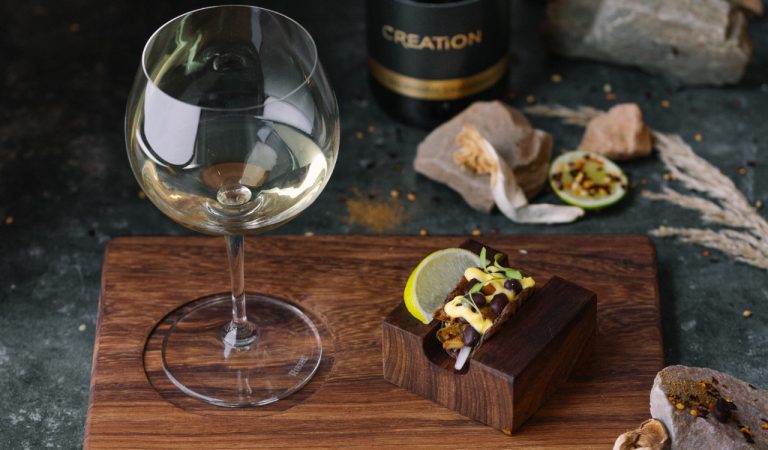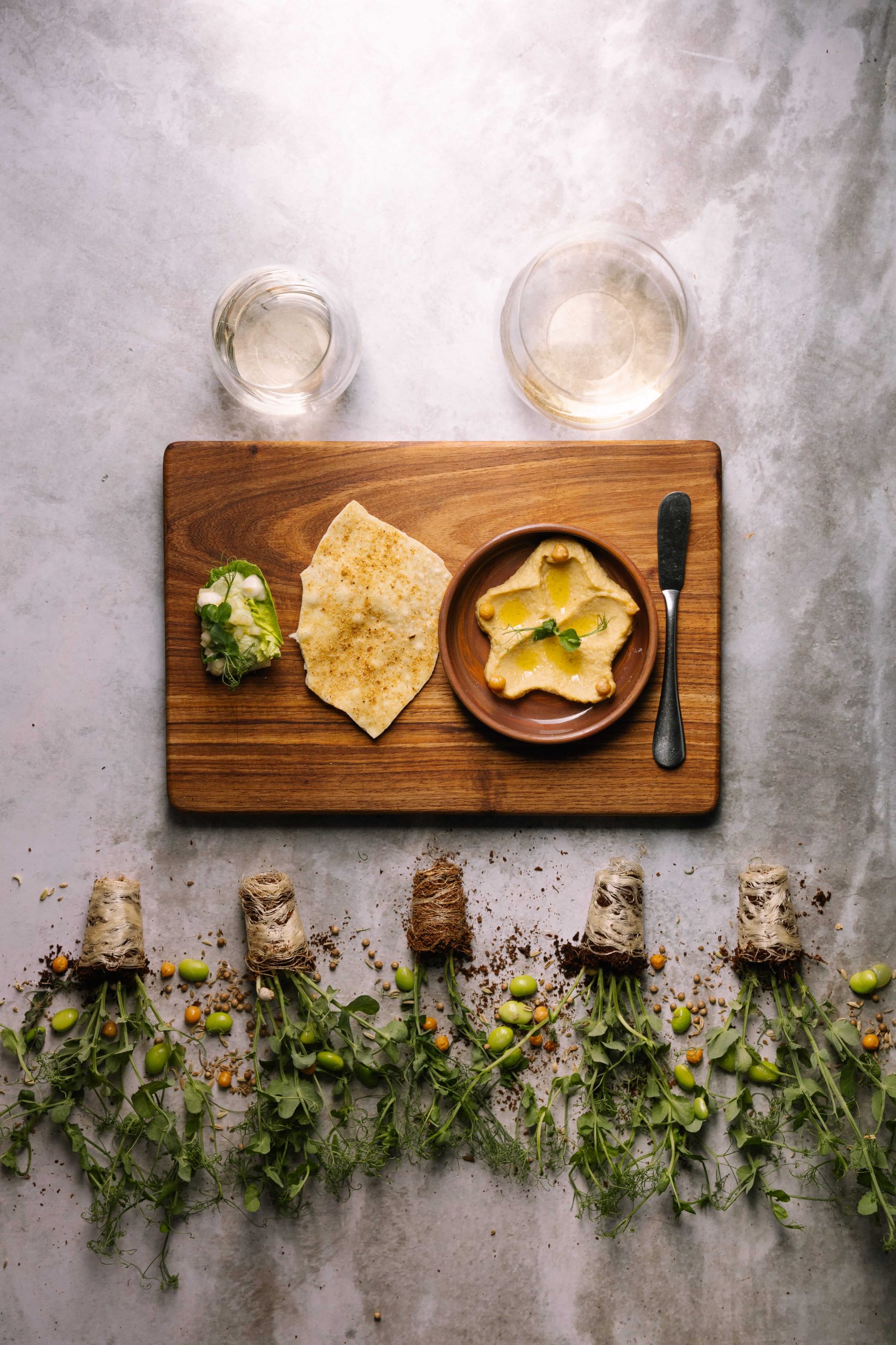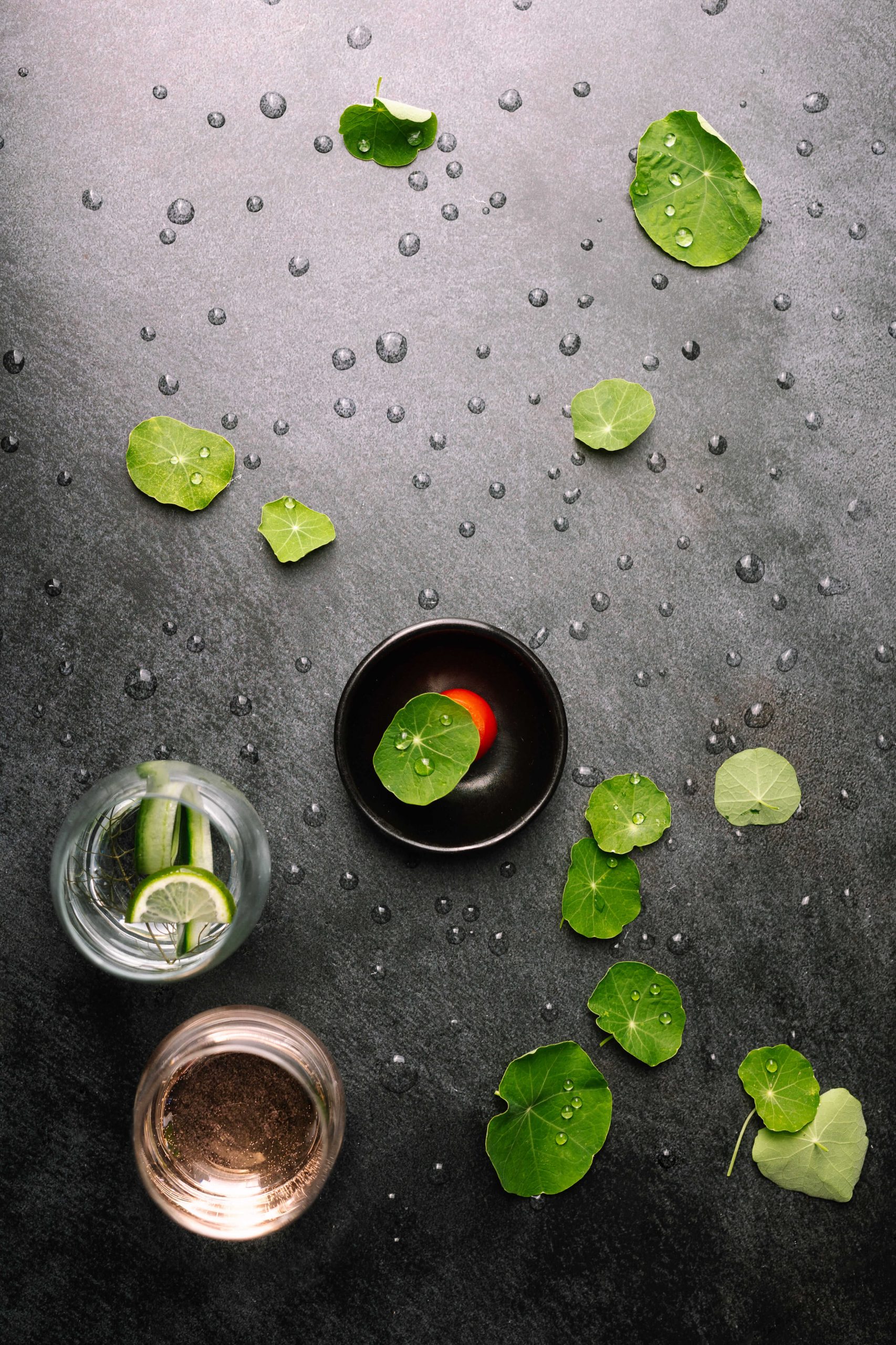Malu Lambert reports that consumers are increasingly curious, with a focus on wellness and sustainability, and this corresponds to mindful drinking habits and a departure into the adventurous.
Curiosity is the combination of the desire for knowledge with the habit of play. It’s the impulse that drives us to travel, to learn, to taste new things. It’s the spark that zigs along a neural pathway, urging a child to pick up a shell and listen for the ocean.
Carolyn Martin of Creation Wines is curiosity personified. Visit her estate at the end of the Hemel-en-Aarde road and you’ll find yourself picking up that shell quite literally. Playfully called a ‘shell-phone’, guests are encouraged to taste wine, and then dial in the sea by pressing their ear to a giant periwinkle.
‘It helps people connect with the wines in a different way,’ explains Martin. ‘Our guests are blown away by how the wines change after listening to the shell-phone. It gives them this powerful link to the terroir.
‘The whole sensory experience is fascinating to people – how the senses are the pathways to the mind and what that means for understanding wine better.’
There are a variety of ways to play at Creation, from the tastings to the food and wine pairing menus, which Martin says she layers with the ‘eight senses’, through visuals, taste, texture, scent, touch… ‘By doing this we actually create a more powerful memory of a dish, or a wine,’ she says.
‘What’s important is how people feel after visiting us. We want them to leave here feeling good, energised. It’s like a Jacuzzi for your brain,’ she says, laughing. It’s no wonder Martin recently returned from Paris after having won a V d’Or 2024 award for ‘Best Brand Experience’.
An important trend she’s noticed is how consumers are interested in the interplay between wine and wellness. Accordingly, Creation now has a plant-based food and wine pairing menu, designed in conjunction with neuroscientists, doctors and integrated specialists.
Wine consumption, it has been widely reported, is in global decline. ‘It’s really the high volume, generic market that’s suffering,’ says Martin. ‘The younger generation wants to drink less as well as higher quality.’
A growing trend supporting this has been dubbed ‘Zebra Striping’, where an alcoholic drink is followed with a non-alcoholic drink, and so on. ‘People are looking for healthier experiences,’ comments Martin.
Speaking to Helen Kock, Brand Portfolio Director at Vinimark, she confirms the thirst for more premium wines is growing, at least within the distributor’s stable. Kock cites some of the top selling on-con brands as Leeuwenkuil, DeMorgenzon, Glenelly, Creation, Nitida, and Thelema – all estates producing wines with a defined sense of place and a clear identity.
The out-take is that experience, more so than simply consumption, is the motivator. If your brand has a clear, engaging story, Gen Z is more likely to reach for the bottle, often to be enjoyed at home rather than at a restaurant.
Kock has delved deep into the dynamics of the off-consumption market. ‘It’s imperative to acknowledge the upward trajectory of the premium wine segment,’ she says. ‘Market data analysis reveals a compelling narrative of growth and diversity within this sector, which is indicative of a broader trend towards consumer discernment and quality.’
The 750ml glass category priced above R100 saw a 2% volume increase in the 12 months up until January 2024, while the R200 category surged by 6,5% in volume during the same period. ‘This points to a clear consumer appetite for premium offerings.’ The trend, Kock says, also points towards diversity and adaptability, reflecting the wide array of consumer tastes and preferences.
‘It’s not confined to any single brand or type, as evidenced by the growth across both concept brands like FAT bastard and those brands that are celebrated for their estate or sense of place, such as Kanonkop. The category’s growth is fuelled by an inclusive approach that embraces both the accessible luxury of concept brands and the high-end exclusivity.
‘The market is dynamic and evolving, where the value is placed on innovation as well as tradition.’
Jenny Handley, of JHP Gourmet Guide, an annual restaurant awards and magazine, agrees: ‘Diners are more open-minded, curious, and daring than before,’ she says.
‘Chefs are approaching sustainability in a more holistic way, not only responsible sourcing of produce, but also wines. It’s also interesting how many sommeliers choose to pair dishes with natural and biodynamic wines, which I find on a par with chefs giving vegans and vegetarians better attention these days.’
Handley loves nothing more than to travel the world, her destinations led by the restaurants she would like to eat at. ‘People who enjoy fine dining on a regular basis do so for the adventure,’ she says. ‘The list of such establishments often cater to lesser-known or unconventional wines.
‘Michelle Erasmus, sommelier at La Colombe in Constantia, recently told me one should not order the same wine twice as more than 300 wines are launched daily! While it’s hard to stay away from your favourites, she does make good sense.’
Handley also highlights how destination restaurants have responded to the visitors’ desire to experience as much local culture as possible, and the wine lists are better reflecting this. An example she says is Klein JAN at Tswalu in the Kalahari, which ‘takes pride in showcasing local wines’.
‘I know that when I travel, if I cannot get to the wine estates, I want the restaurants to bring them to me,’ she says.
Armand Ridgard, Production and Special Projects Coordinator for JAN, shares that at their bespoke events in Cape Town they only offer a set drinks pairing. Guests are given the choice between alcoholic or non-alcoholic.
‘A beautifully broad task, non-alcoholic pairings are near infinite,’ enthuses Ridgard. He also notes guests are often surprised they have the option for a dedicated non-alcoholic pairing across their seven-course meal. ‘This should be an accessible option in any fine dining experience.
‘Natural fermentation is king and fresh-pressed juice is irreplaceable. These are the bedrock of my non-alcoholic pairings. As our private dinners are all communal tables it’s easy to stand out being that person not having the wine pairing. It’s important to integrate their beverage experience into the normal wine pairing.’
Spencer Fondaumiere has noticed the exponential swing to the ‘low and no alcohol movement’ – or NoLo – in restaurants. An ASI certified sommelier and chairman of the South African Sommeliers Association, Fondaumiere sees how people are embracing healthier lifestyle choices.
‘This, coupled with rising inflation and a general tightening of the belt, wine as the guilty pleasure is indulged in a lot less,’ commiserates Fondaumiere.
‘The hospitality industry is in an interesting space. Years of poor strategy have caught up, with many restaurants attempting to maximise revenues through beverage without the necessary investment. The general consumer doesn’t want to pay three times the price for the same wine they can pick up at the local bottle store.’ Fondaumiere asserts that local consumers are buying less wines in restaurants, and rather enjoying them at home.
‘On the flip side, the secondary market is flying! Which is a great testament to how well the very best South African wines have performed in recent times,’ he says.
‘Mindful drinking is top of mind – whether it’s about water conservation or moderating alcohol intake,’ adds Hannerie Visser, Creative Director of Studio H, a culinary-minded design and
brand consulting studio. ‘Thanks to a wave of innovation in the industry, consumers now have an expanding range of choices.’
According to the Studio H Future Food Report 2024, 13% of individuals between the ages of 18 and 34 have embraced the trend, frequently opting for non-alcoholic options when dining out or socialising. This movement is not limited to the younger generation, as both 18-34-year-olds and 35-54-year-olds have shown a doubling in their engagement with non-alcoholic alternatives since August 2020.
ALSO SEE: CAPE TOWN CHEFS PREDICT 2024 FOOD TRENDS
Images: Supplied



